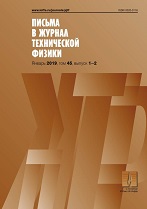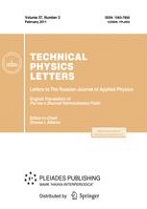|
This article is cited in 8 scientific papers (total in 8 papers)
Selective sensors of nitrogen dioxide based on thin tungsten oxide films under optical irradiation
A. V. Almaev, N. N. Yakovlev, E. V. Chernikov, O. P. Tolbanov
Tomsk State University
Abstract:
It is shown that NO$_{2}$ present in air, beginning at a concentration of 1 ppm, can be selectively detected by sensors based on Au/WO$_{3}$ : Au thin films activated by laser diode radiation with maximum intensity at 400 nm instead of constant heating. The radiation-activated photodesorption reduces the time of sensor response to NO$_{2}$. A high humidity of air under conditions of room-temperature irradiation additionally increases the device sensitivity to NO$_{2}$ due to the appearance of additional adsorption sites. The absence of a sensor response to reducing gases and varying oxygen concentration in the atmosphere is caused by the photodesorption of chemisorbed O$_{2}^{-}$ species during their interaction with holes generated in intrinsic optical transitions in the near-surface region of WO$_{3}$ film.
Keywords:
nitrogen dioxide, tungsten trioxide, thin films, magnetron sputtering, optical radiation.
Received: 03.06.2019
Revised: 24.06.2019
Accepted: 26.06.2019
Citation:
A. V. Almaev, N. N. Yakovlev, E. V. Chernikov, O. P. Tolbanov, “Selective sensors of nitrogen dioxide based on thin tungsten oxide films under optical irradiation”, Pisma v Zhurnal Tekhnicheskoi Fiziki, 45:20 (2019), 7–10; Tech. Phys. Lett., 45:10 (2019), 1016–1019
Linking options:
https://www.mathnet.ru/eng/pjtf5286 https://www.mathnet.ru/eng/pjtf/v45/i20/p7
|


|





 Contact us:
Contact us: Terms of Use
Terms of Use
 Registration to the website
Registration to the website Logotypes
Logotypes








 Citation in format
Citation in format 
